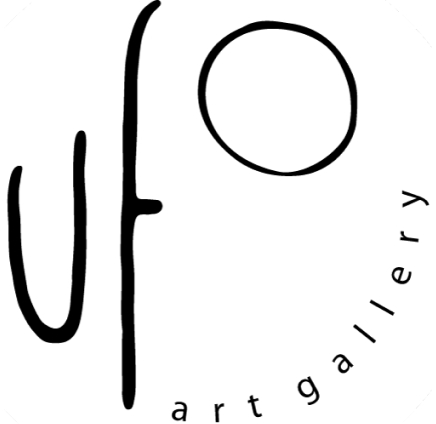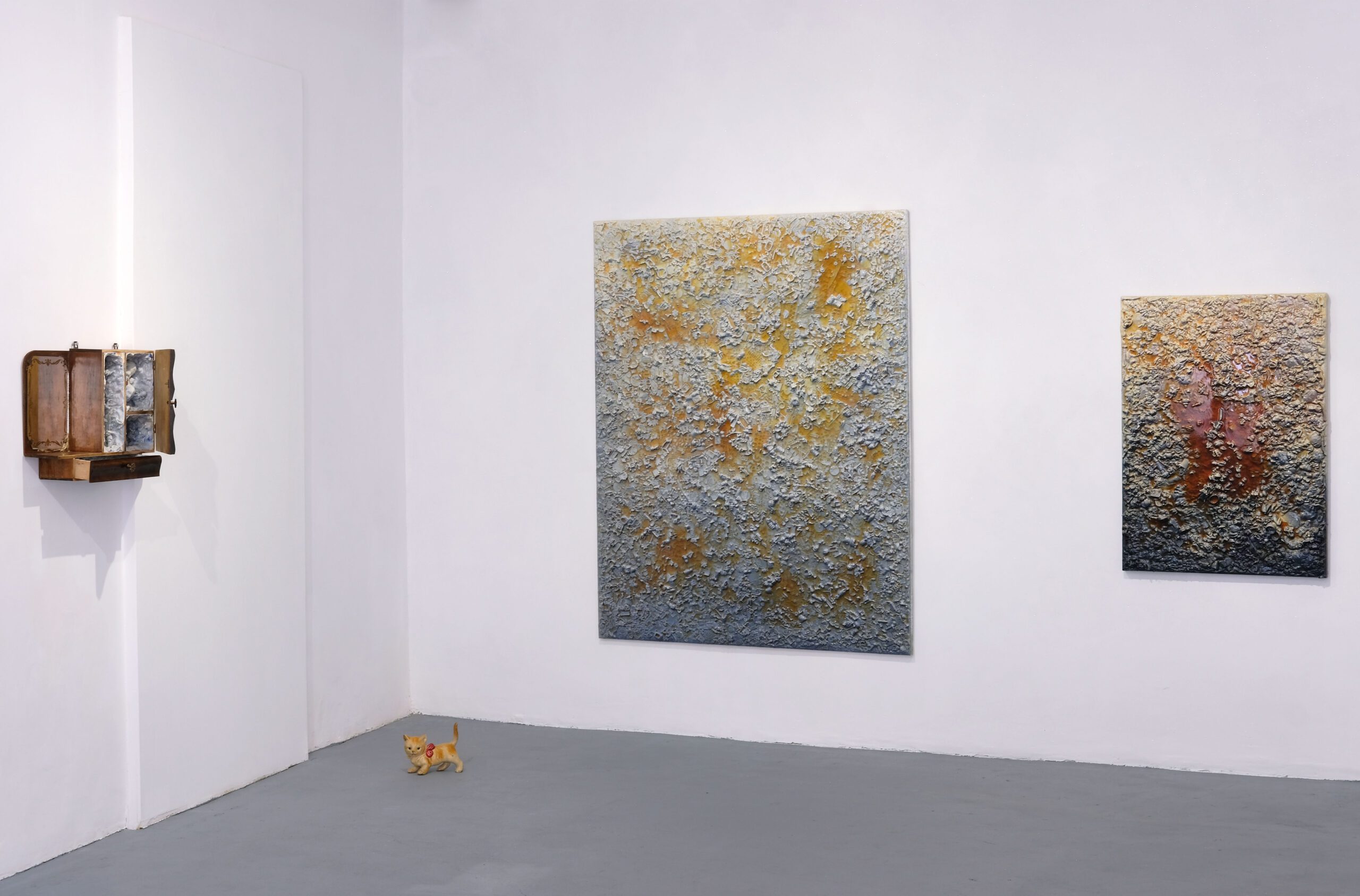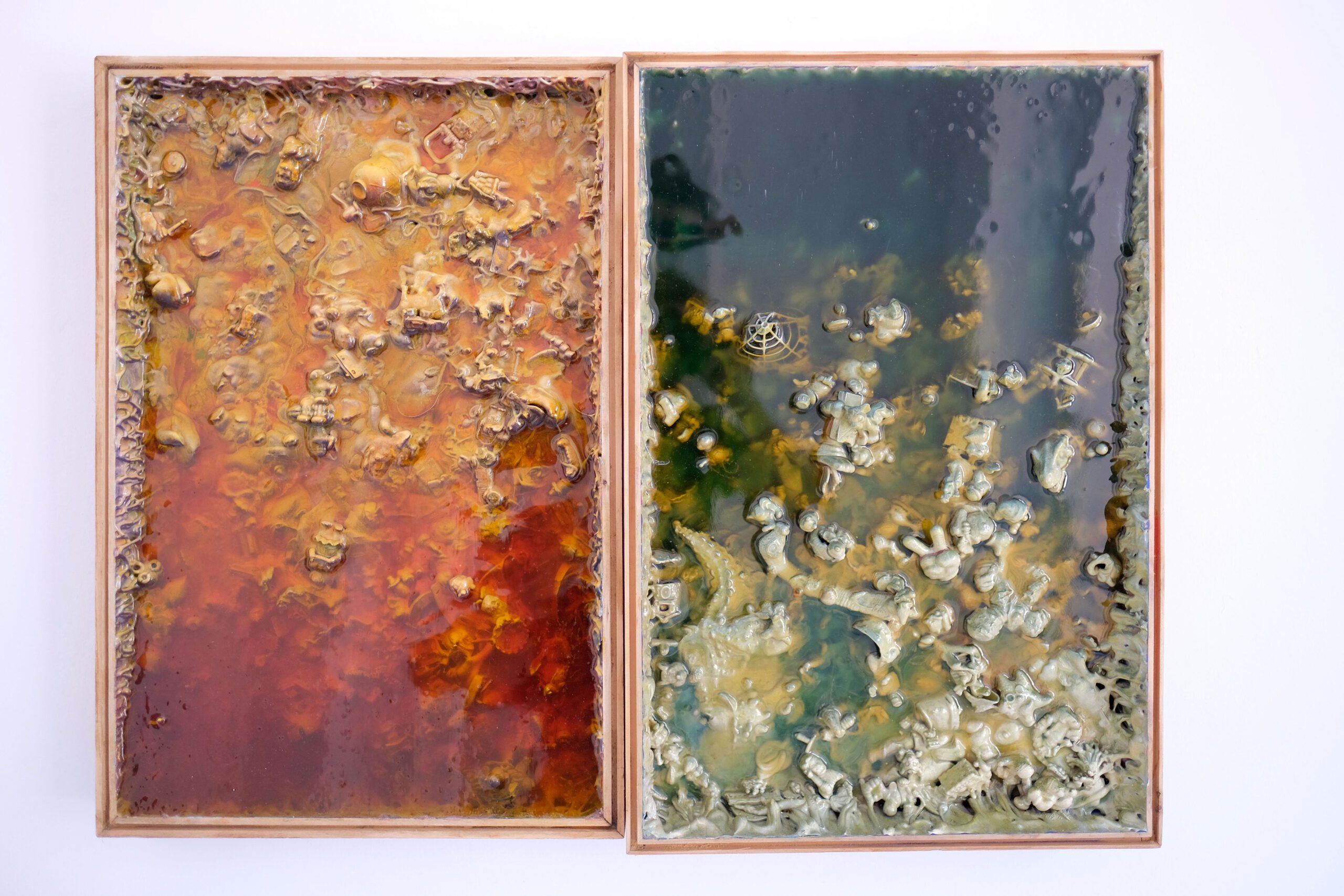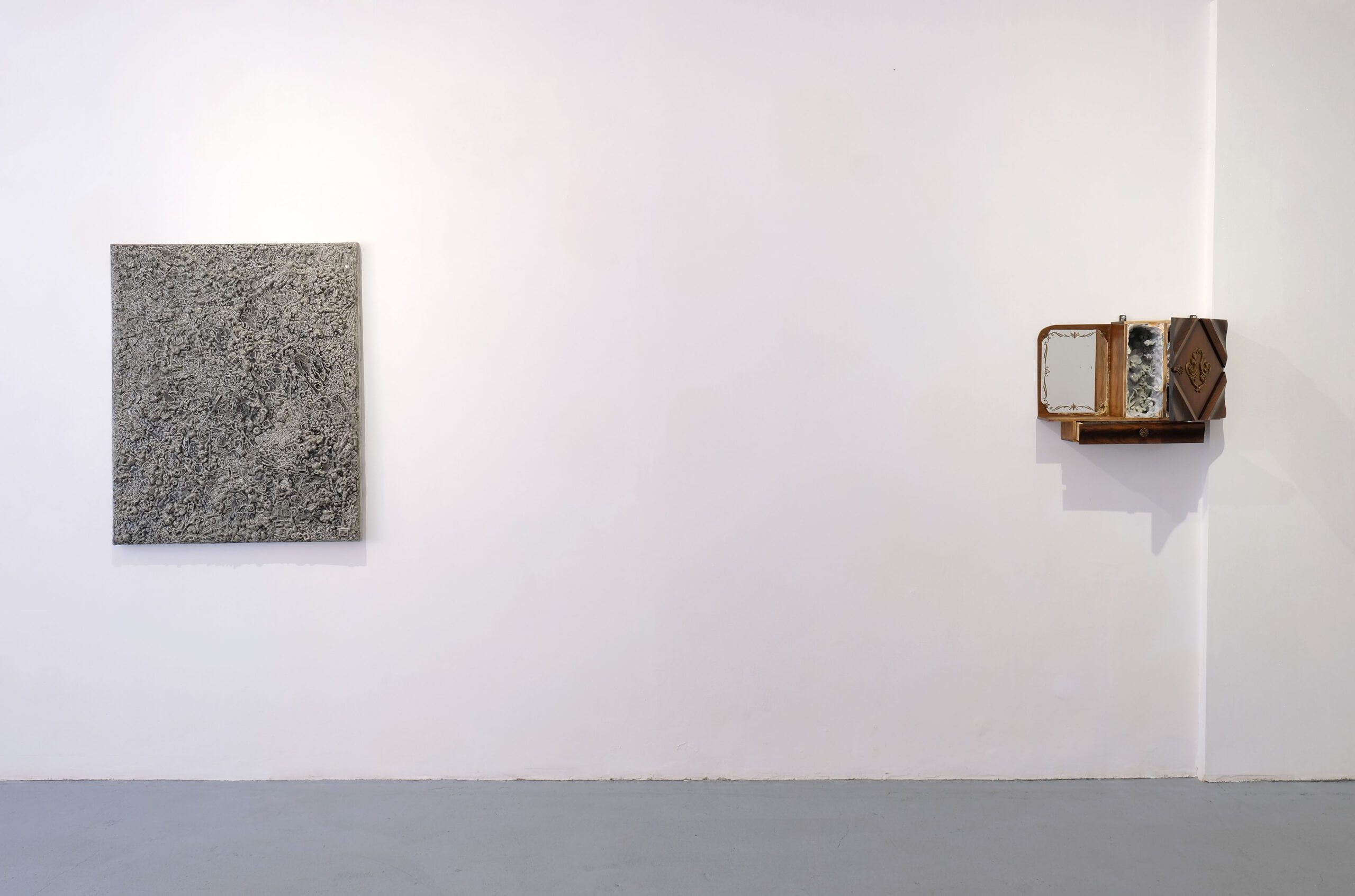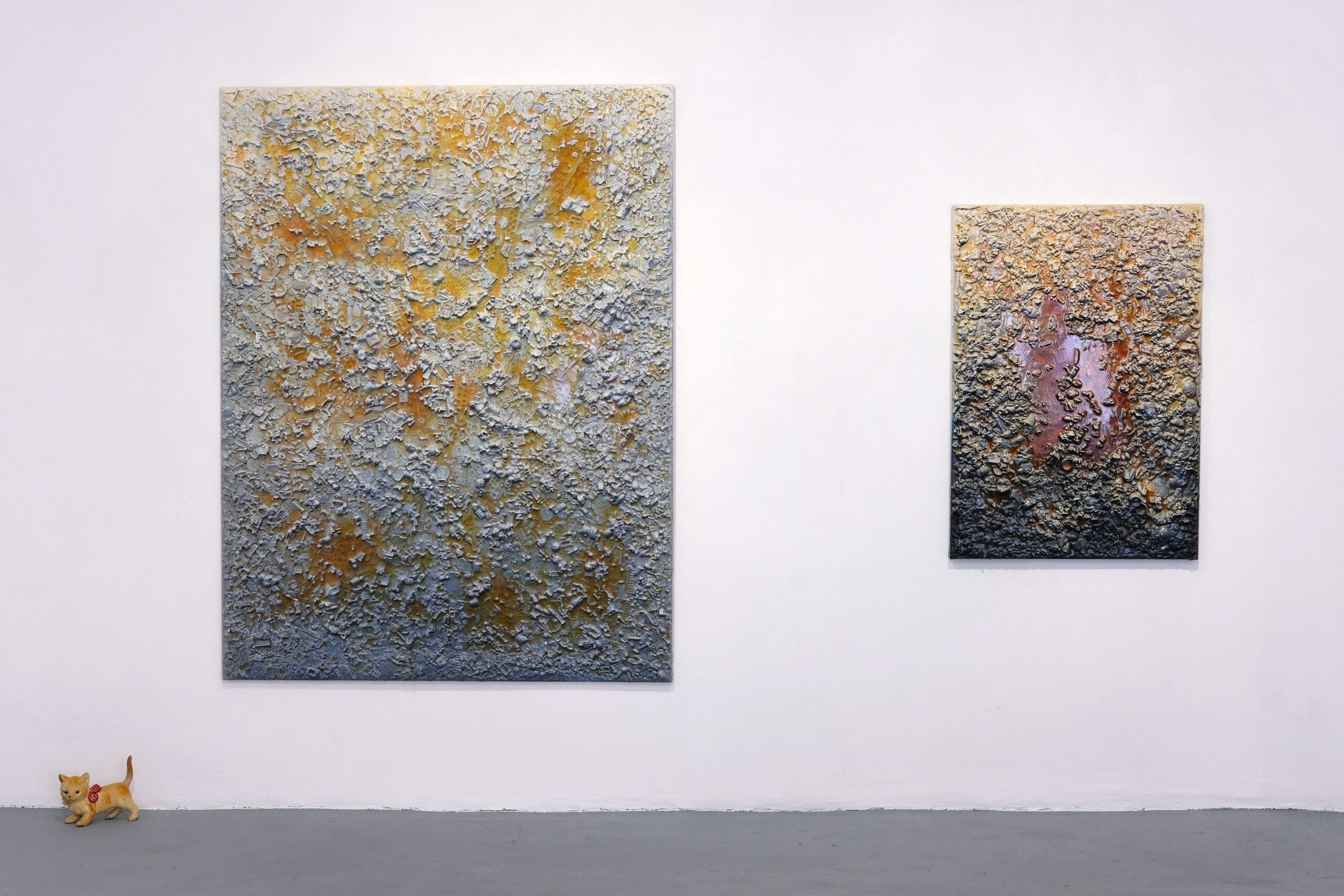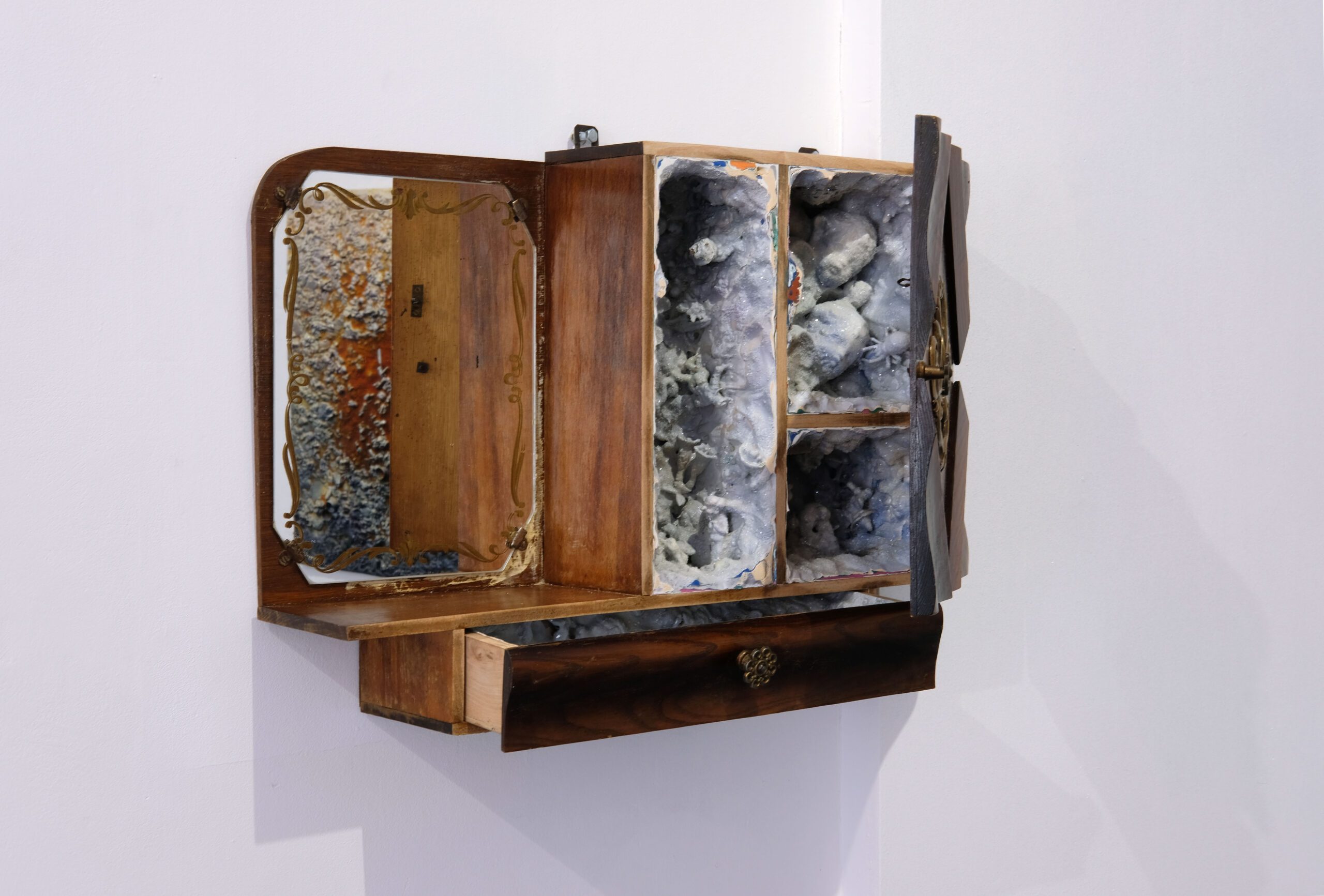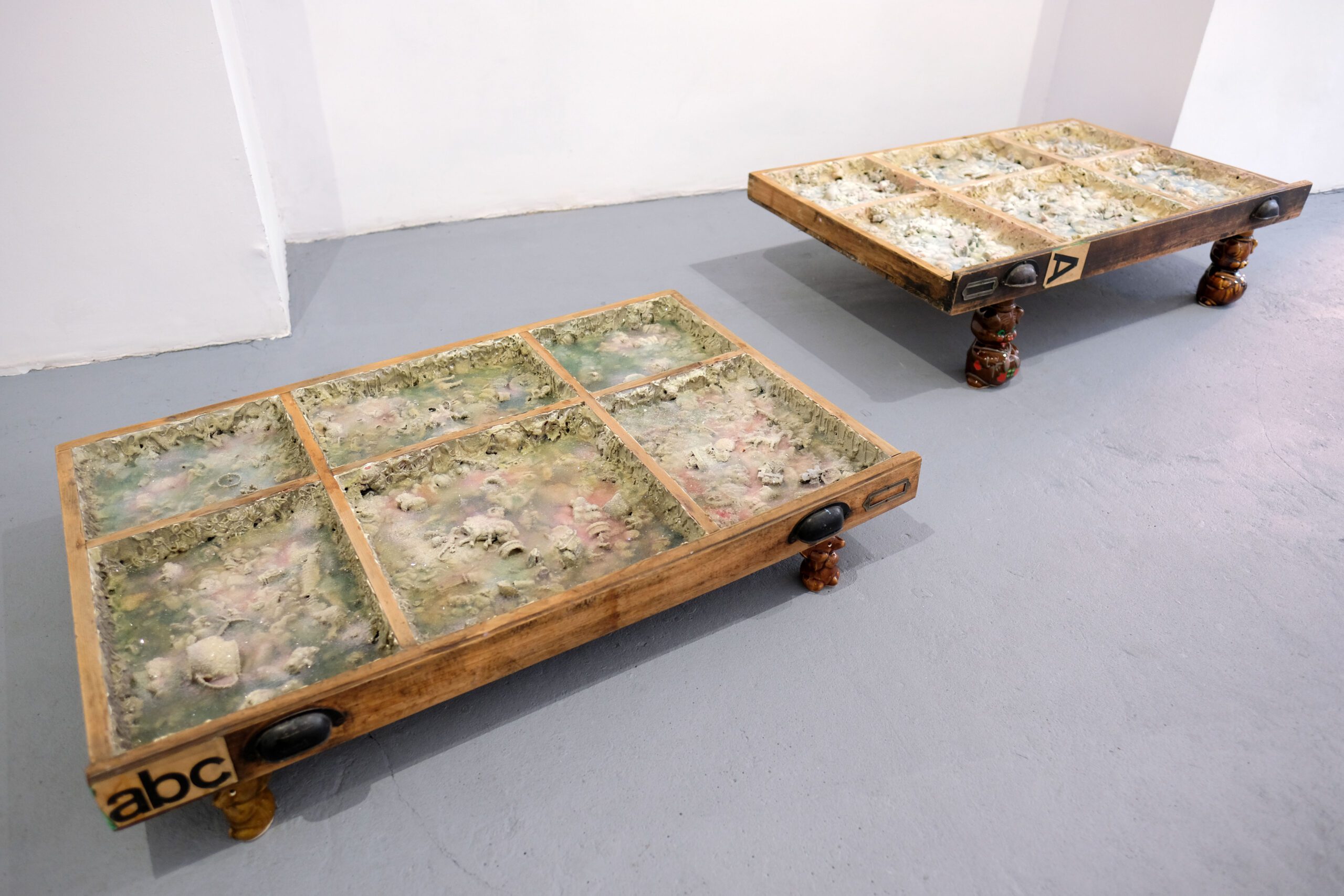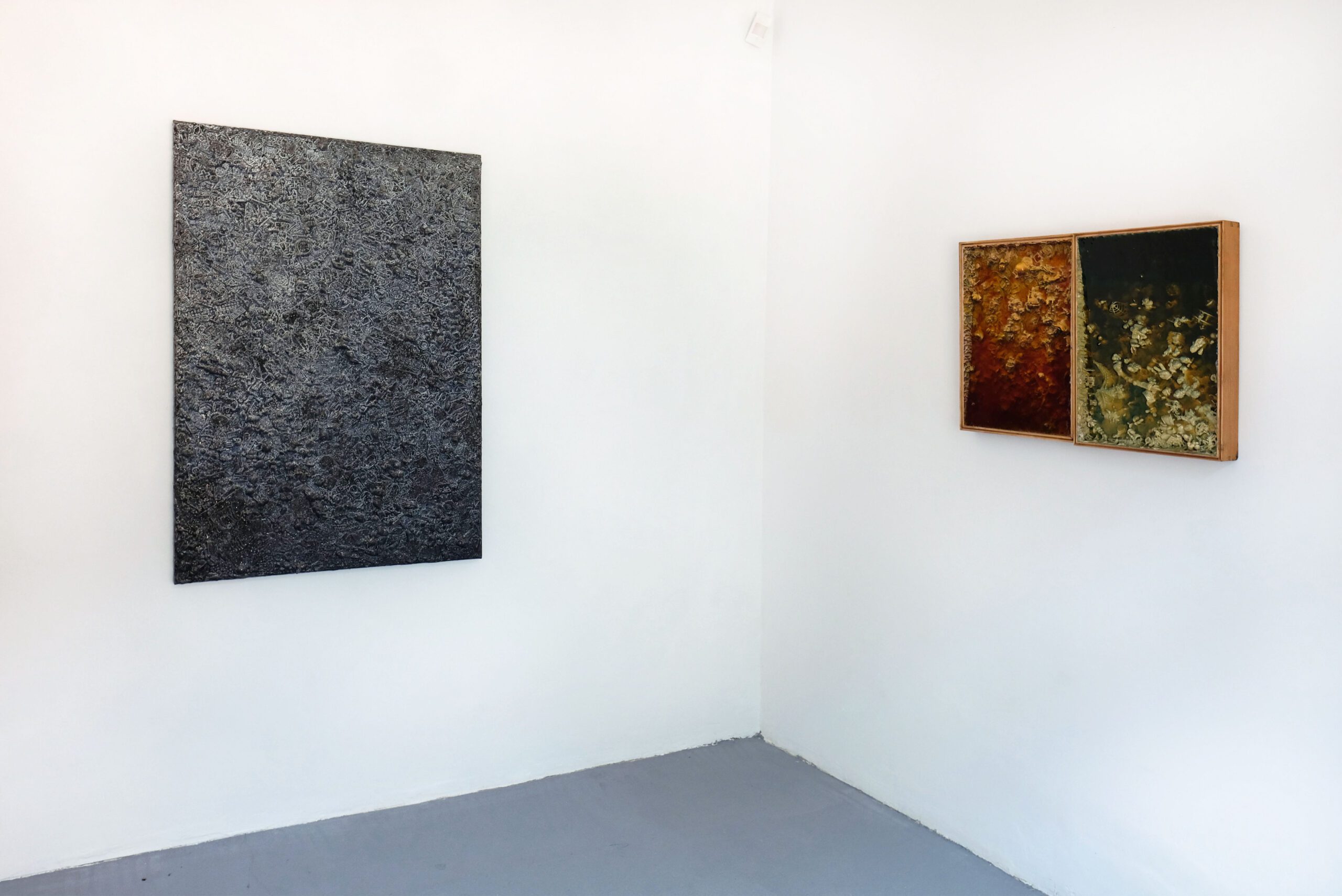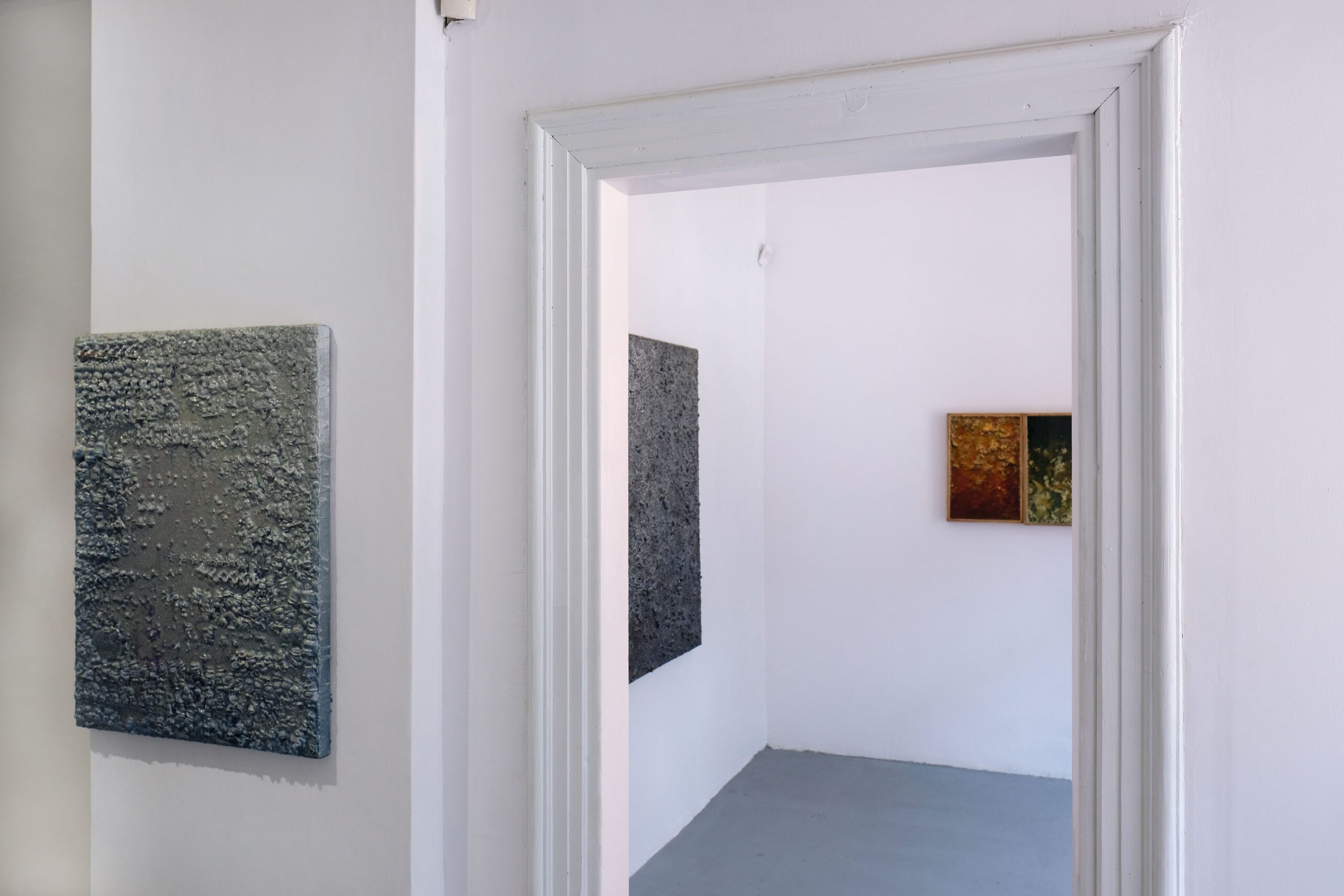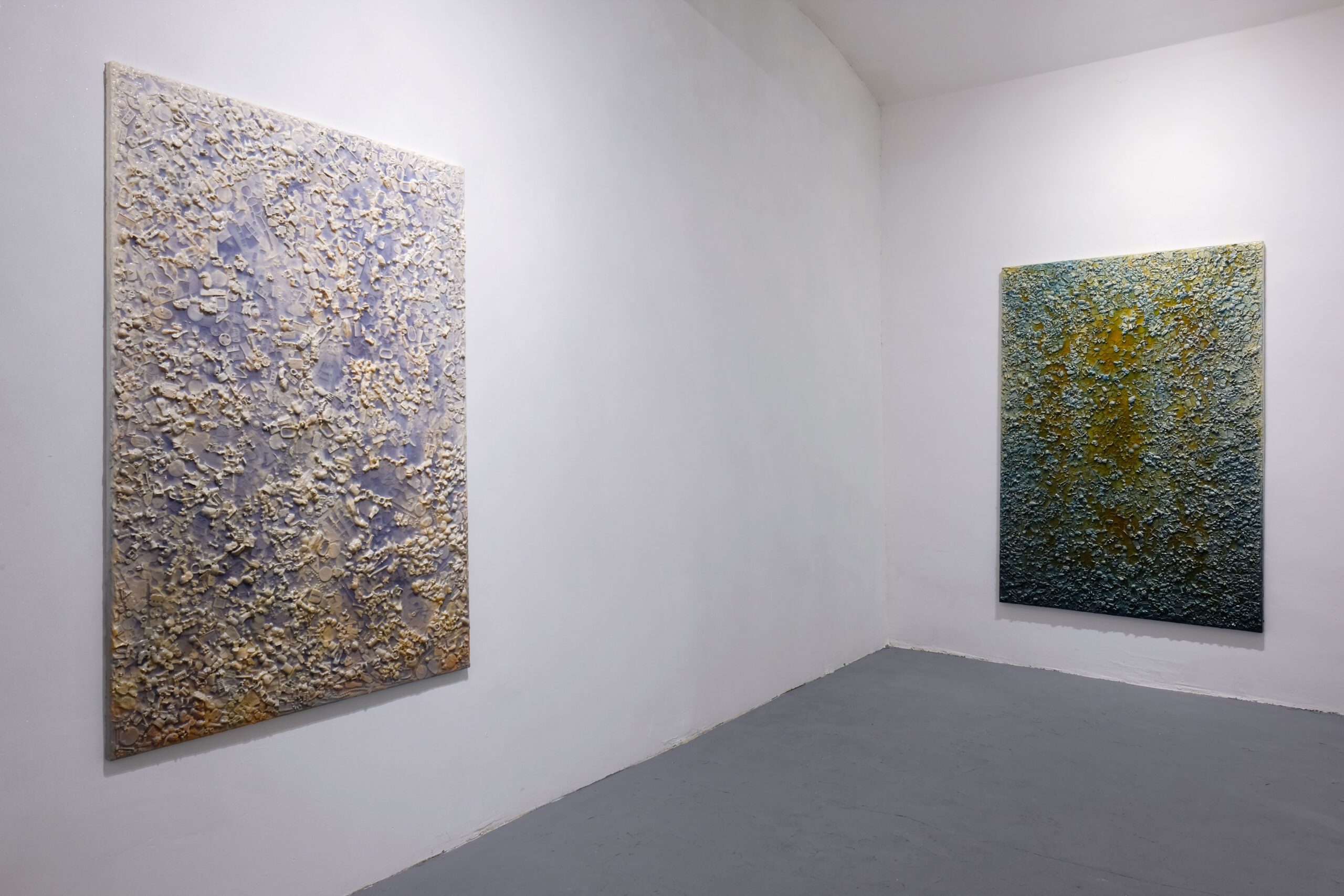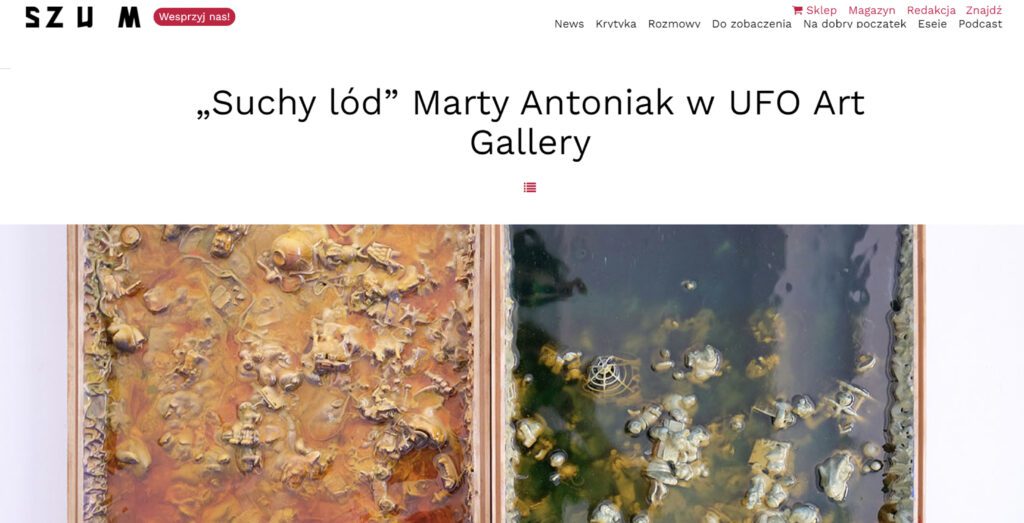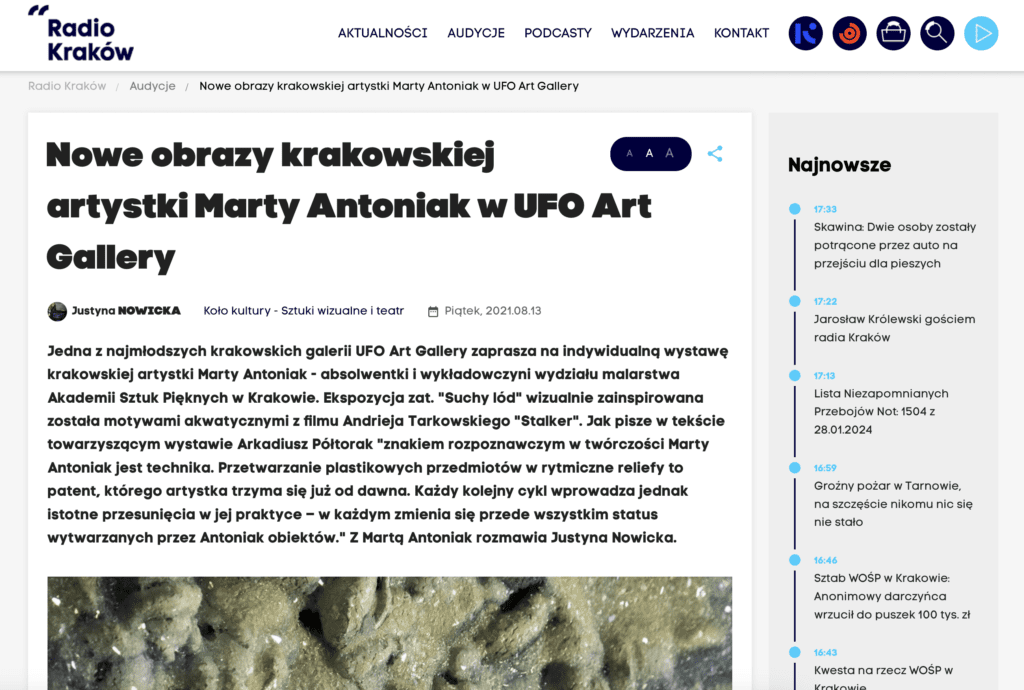The hallmark of Marta Antoniak’s work is technique. Transforming plastic objects into rhythmic reliefs is a patent that the artist has been practicing for a long time. However, each subsequent cycle introduces significant changes in her practice – in each one, the status of the objects produced by Antoniak changes primarily. Some of her older works resemble anatomical models. Others are associated with procedural textures created using algorithms (arbitrarily cropped patterns seem to outgrow the frames and loop in an abstract, mathematical space). The paintings collected at the “Dry Ice” exhibition have something of an icon in them. Colorful reliefs peek out from under the layer of transparent, shiny resin, like expensive underwater paintings in the famous scene of “Stalker” directed by Andrei Tarkovsky, when the title character falls asleep at the edge of the pond. Antoniak’s new works seduce with the impression of depth, but at the same time they deny the viewer an absorbent insight into the interior. Their glassy coating reflects even the faintest rays of light and stops the eye on the surface.
The fetishization of glamor, the branding of nobility and a sublime aura, and at the same time a preference for superficial perception and common materials – these are the basic hallmarks of camp, and “Dry Ice” is a camp exhibition to the core. Even the walls in the gallery sparkle. Antoniak’s works refer to religious painting (or display cases in “serious” museums), but lofty exegeses will not be supported by any symbols. On closer inspection, the images barely reveal their own structure. The fact that they consist of kilograms of plastic magma will not be obscured by any layer of glaze.
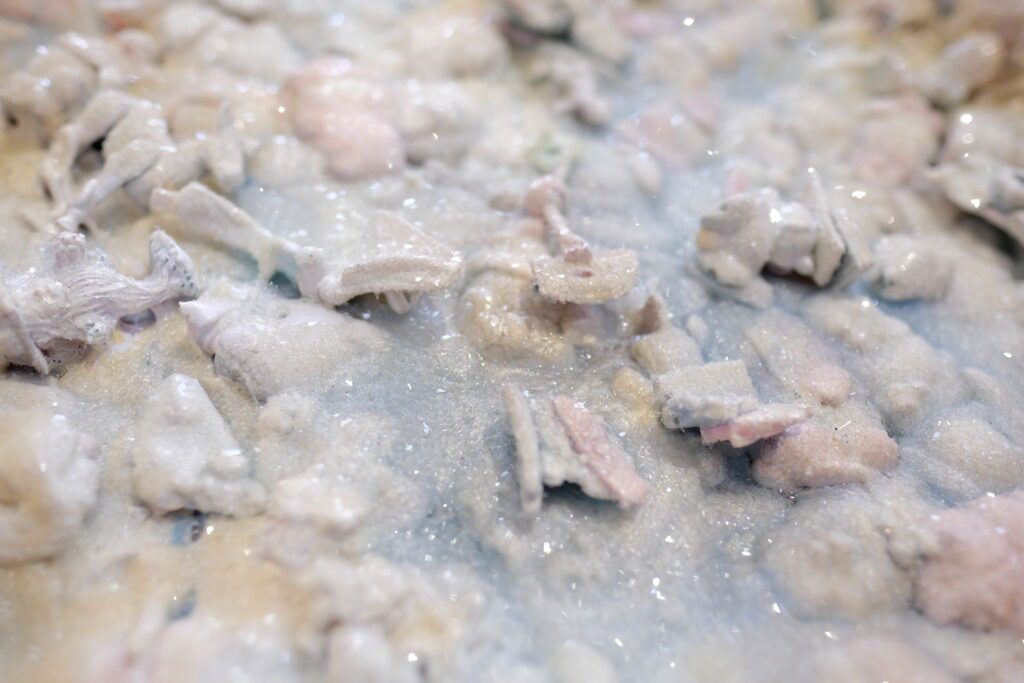

In addition to the above remarks, it is worth noting that the polymer material is not just a tool in Antoniak’s work. It is also a topic. Plastic icons and models are natural children of the culture of abundance, which puts comfort and economic profit before sustainable development or care for the environment. Due to the mismanagement of modern people over the last fifty years, tons of cheap plastics have dispersed on the surface of the earth, in the waters of the oceans, and even in the bodies of their living inhabitants. The portable sea of plastic has become – to put it in the words of theorist Timothy Morton – a hyperobject. An entity so powerful and complex that it is impossible to describe or represent it in a comprehensive way, and at the same time “sticky” – sticking to our bodies and perceptual apparatuses on a limited, local scale. “Dry Ice” by Marta Antoniak can be read as evidence of such sticking. However, this is, importantly, a camp testimony. Unlike many contemporary artists who are concerned with ecological problems, Antoniak does not promise us the opportunity to listen to Gaia’s piercing moan and stays away from catastrophic authenticity. Even in queer make-up, plastic cannot be sublimated, and under the cover of irony, epoxy resin and glitter, “Dry Ice” hides not metaphysical depth, but brutally sober realism.
Gods are gone. The eye is defective. Pools after rain are full of polymer reliefs.
Arkadiusz Półtorak
